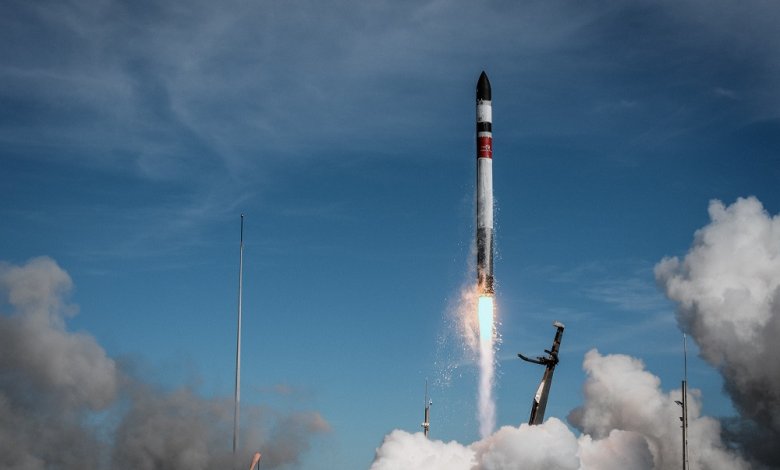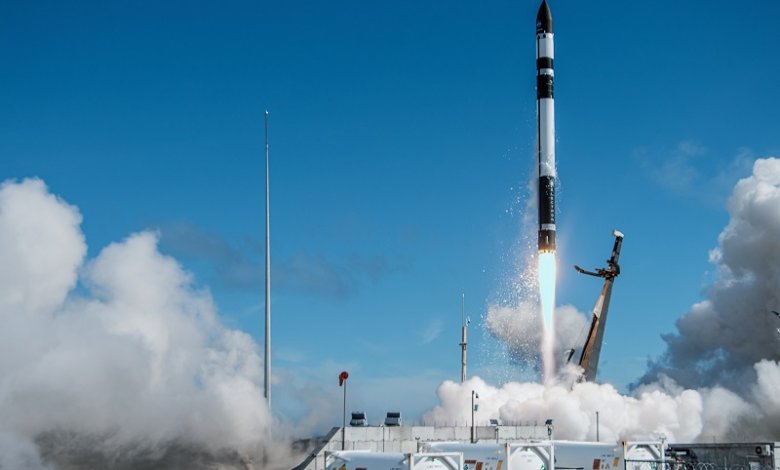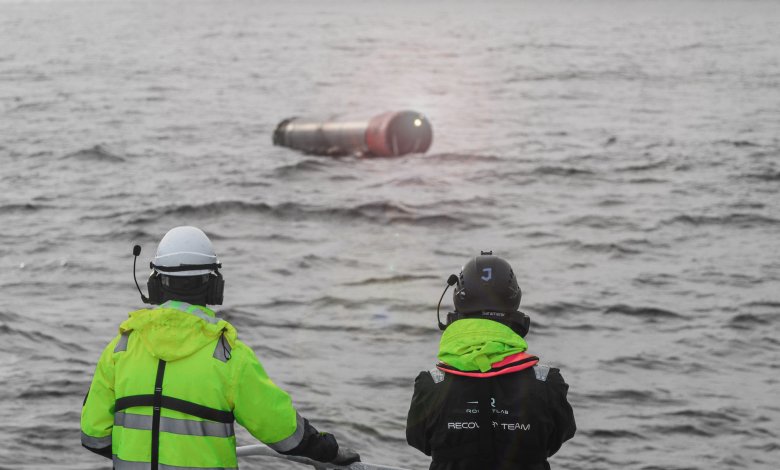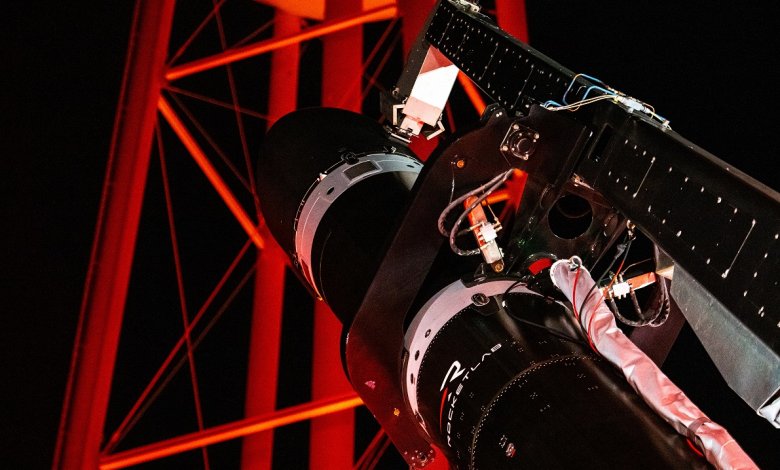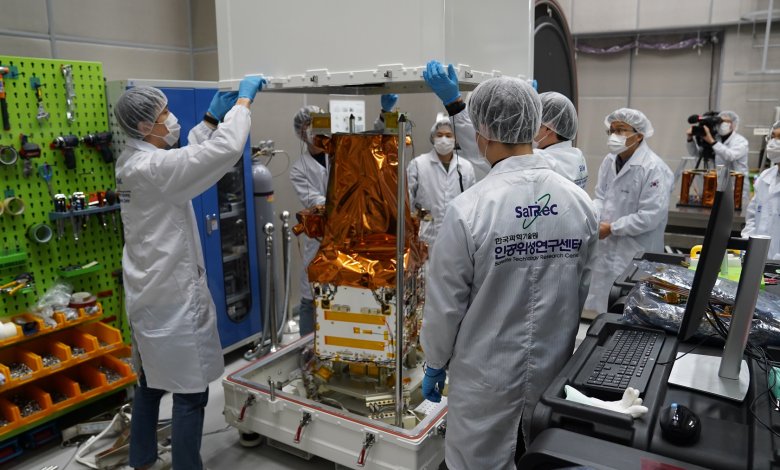Rocket Lab Unveils Plans for New 8-Ton Class Reusable Rocket for Mega-Constellation Deployment
Rocket Lab Unveils Plans for New 8-Ton Class Reusable Rocket for Mega-Constellation Deployment
The advanced new rocket, Neutron, will transform space access by delivering reliable and cost-effective launch services for satellite mega-constellations, deep space missions and human spaceflight
Long Beach, California., (March 1, 2021) -- Rocket Lab today unveiled plans for its Neutron rocket, an advanced 8-ton payload class launch vehicle tailored for mega-constellation deployment, interplanetary missions and human spaceflight.
Neutron will build on Rocket Lab’s proven experience developing the reliable workhorse Electron launch vehicle, the second most frequently launched U.S. rocket annually since 2019. Where Electron provides dedicated access to orbit for small satellites of up to 300 kg (660 lb), Neutron will transform space access for satellite constellations and provide a dependable, high-flight-rate dedicated launch solution for larger commercial and government payloads.
“Rocket Lab solved small launch with Electron. Now we’re unlocking a new category with Neutron,” said Peter Beck, Rocket Lab founder and CEO. “We’ve listened to our customers and the message is clear - biggest doesn’t always mean best when it comes to constellation deployment. Efficiently building the mega constellations of the future requires launching multiple satellites in batches to different orbital planes. It’s a requirement that all too often sees large launch vehicles fly with payloads well below their full lift capacity, which is an incredibly expensive and inefficient way to build out a satellite constellation. Neutron’s 8-ton lift capacity will make it ideally sized to deploy satellites in batches to specific orbital planes, creating a more targeted and streamlined approach to building out mega constellations.”
Neutron will also provide a dedicated service to orbit for larger civil, defense and commercial payloads that need a level of schedule control and high-flight cadence not available on large and heavy lift rockets. Neutron will be capable of lifting 98% of all satellites forecast to launch through 2029 and will be able to introduce highly disruptive lower costs by leveraging Electron’s heritage, launch sites and architecture.
The medium-lift Neutron rocket will be a two-stage launch vehicle that stands 40 meters (131 feet) tall with a 4.5-meter (14.7 ft) diameter fairing and a lift capacity of up to 8,000 kg (8 metric tons) to low-Earth orbit, 2,000 kg to the Moon (2 metric tons), and 1,500 kg to Mars and Venus (1.5 metric tons). Neutron will feature a reusable first stage designed to land on an ocean platform, enabling a high launch cadence and decreased launch costs for customers. Initially designed for satellite payloads, Neutron will also be capable of International Space Station (ISS) resupply and human spaceflight missions.
Neutron launches will take place from Virginia’s Mid-Atlantic Regional Spaceport located at the NASA Wallops Flight Facility. By leveraging the existing launch pad and integration infrastructure at the Mid-Atlantic Regional Spaceport, Rocket Lab eliminates the need to build a new pad, accelerating the timeline to first launch, expected in 2024.
Rocket Lab is assessing locations across America to establish a new state-of-the-art factory to support large-scale Neutron manufacturing, adding hundreds of jobs to the Rocket Lab team.
For more information on Rocket Lab, visit www.rocketlabusa.com and join the conversation at www.twitter.com/rocketlab
ENDS
Rocket Lab Media Contact:
Morgan Bailey | media@rocketlabusa.com
Images available at www.rocketlabusa.com/mediaimages
About Rocket Lab:
As a global leader in launch, satellites and spacecraft components, Rocket Lab is transforming space access. Founded in 2006, Rocket Lab provides end-to-end mission services that provide frequent and reliable access to space for civil, defense, and commercial markets. Headquartered in Long Beach, California, Rocket Lab designs and manufactures the Electron and Neutron launch vehicles and Photon satellite platform. Since its first orbital launch in January 2018, Rocket Lab’s Electron launch vehicle has become the second most frequently launched U.S. rocket annually and has delivered 97 satellites to orbit for private and public sector organizations, enabling operations in national security, scientific research, space debris mitigation, Earth observation, climate monitoring, and communications. Rocket Lab operates launch sites in Māhia, New Zealand and Wallops Island, Virginia. To learn more, visit www.rocketlabusa.com.
Forward-Looking Statements
This press release may contain certain “forward-looking statements” within the meaning of the Private Securities Litigation Reform Act of 1995, Section 27A of the Securities Act 1933, as amended, and Section 21E of the Securities Exchange Act of 1934, as amended, including statements regarding Vector’s, Rocket Lab’s or their respective management teams’ expectations, hopes, beliefs, intentions or strategies regarding the future. The words “anticipate”, “believe”, “continue”, “could”, “estimate”, “expect”, “intends”, “may”, “might”, “plan”, “possible”, “potential”, “predict”, “project”, “should”, “would” and similar expressions may identify forward-looking statements, but the absence of these words does not mean that a statement is not forward-looking. These forward-looking statements are based on the current expectations and beliefs of Rocket Lab USA, Inc. (“Rocket Lab”) concerning future developments and their potential effects on Rocket Lab. Many factors could cause actual future events to differ materially from the forward-looking statements in this press release, including but not limited to: (i) potential difficulties or delays in developing or commercializing Neutron, including technical design or manufacturing challenges (ii) our ability to finance the development and commercialization of Neutron, (iii) our ability to obtain sufficient launch slots for Neutron, (iv) potential increases in the cost or availability of raw materials or other components necessary for manufacture, (v) changes in the competitive and highly regulated industries in which Rocket Lab operates, variations in operating performance across competitors and changes in laws and regulations affecting Rocket Lab’s business, (vi) the ability to implement business plans, forecasts and other expectations, and (viii) the risk of downturns in the commercial launch services, satellite and spacecraft industry or the economy generally. There can be no assurance that the future developments affecting Rocket Lab will be those that we have anticipated. These forward-looking statements involve a number of risks, uncertainties (some of which are beyond Rocket Lab’s control) or other assumptions that may cause actual results or performance to be materially different from those expressed or implied by these forward-looking statements. Except as required by law, Rocket Lab is not undertaking any obligation to update or revise any forward-looking statements whether as a result of new information, future events or otherwise.
Additional Information
This press release contains information relevant to a proposed transaction between Rocket Lab and Vector Acquisition Corporation (“Vector”). This press release does not constitute an offer to sell or exchange, or the solicitation of an offer to buy or exchange, any securities, nor shall there be any sale of securities in any jurisdiction in which such offer, sale or exchange would be unlawful prior to registration or qualification under the securities laws of any such jurisdiction. Vector and Rocket Lab intend to file a registration statement on Form S-4 with the U.S. Securities and Exchange Commission (the “SEC”), which will include a document that serves as a joint prospectus and proxy statement, referred to as a proxy statement/prospectus. A proxy statement/prospectus will be sent to all Rocket Lab and Vector shareholders. Rocket Lab and Vector will also file other documents regarding the proposed transaction with the SEC. Before making any voting decision, investors and security holders of Rocket Lab and Vector are urged to read the registration statement, the proxy statement/prospectus and all other relevant documents filed or that will be filed with the SEC in connection with the proposed transaction as they become available because they will contain important information about the proposed transaction.
Investors and security holders will be able to obtain free copies of the registration statement, the proxy statement/prospectus and all other relevant documents filed or that will be filed with the SEC by Rocket Lab and Vector through the website maintained by the SEC at www.sec.gov.
The documents filed by Vector with the SEC also may be obtained free of charge upon written request to Vector Acquisition Corporation, One Market Street, Steuart Tower, 23rd Floor, San Francisco, CA 94105. The documents filed by Rocket Lab with the SEC also may be obtained free of charge upon written request to Rocket Lab USA, Inc., 3881 McGowen Street, Long Beach, CA 90808.
Participants in the Solicitation
Rocket Lab, Vector and their respective directors and executive officers may be deemed to be participants in the solicitation of proxies from Vector’s shareholders in connection with the proposed transaction. A list of the names of such directors, executive officers, other members of management, and employees, and information regarding their interests in the business combination will be contained in Vector’s filings with the SEC, including Vector’s Quarterly Report on Form 10-Q for the fiscal quarter ended September 30, 2020, which was filed with the SEC on November 16, 2020, and such information and names of Rocket Lab’s directors and executive officers will also be in the Registration Statement on Form S-4 to be filed with the SEC by Rocket Lab and Vector, which will include the proxy statement of Vector. Additional information regarding the interests of such potential participants in the solicitation process will also be included in the registration statement (and will be included in the definitive proxy statement/prospectus) and other relevant documents when they are filed with the SEC.



